How is a Squid like a Snail?

They're both molluscs, one of the
major groups of invertebrates
(animals without backbones)
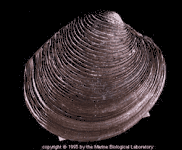 Molluscs (about 200,000 species) have:
Molluscs (about 200,000 species) have:
- soft, fleshy bodies
- a tongue-like organ called a radula
- a hard, external shell--usually
Photo © The Marine Biological Laboratory

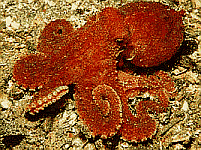
Cephalopods (about 1,000 species) have:
- well developed brains
- a circulatory system with three hearts, veins, and arteries
- ink sacs--usually
- no external shell--in most cases
Photo © Kerry L. Werry 1995
They:
- live only in the sea
- use jet propulsion
- can rapidly change skin color and texture--in most cases

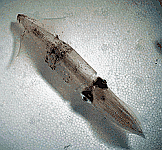
Squids (about 500 species) have:
- long, cylindrical bodies
- 8 arms and 2 tentacles--usually
- an internal, blade-shaped gladius
- fins
Photo © The Marine Biological Laboratory

Can you find the cephalopod?
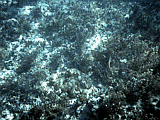 There's an octopus in this photo.
It has changed its skin color to
blend with its surroundings.
There's an octopus in this photo.
It has changed its skin color to
blend with its surroundings.
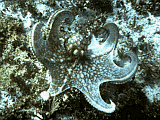 Octopus, squid, and other
cephalopods have developed hiding
to a fine art. They can change
color in a split second using
pigment cells called chromatophores. Their survival
depends on it!
Octopus, squid, and other
cephalopods have developed hiding
to a fine art. They can change
color in a split second using
pigment cells called chromatophores. Their survival
depends on it!
Photo: Clyde F.E. Roper/National Museum of Natural History


Ocean Planet Exhibition
Floorplan

Smithsonian Giant Squid Overview Page
gene carl feldman / gene@seawifs.gsfc.nasa.gov
![]() Octopus, squid, and other
cephalopods have developed hiding
to a fine art. They can change
color in a split second using
pigment cells called chromatophores. Their survival
depends on it!
Octopus, squid, and other
cephalopods have developed hiding
to a fine art. They can change
color in a split second using
pigment cells called chromatophores. Their survival
depends on it!